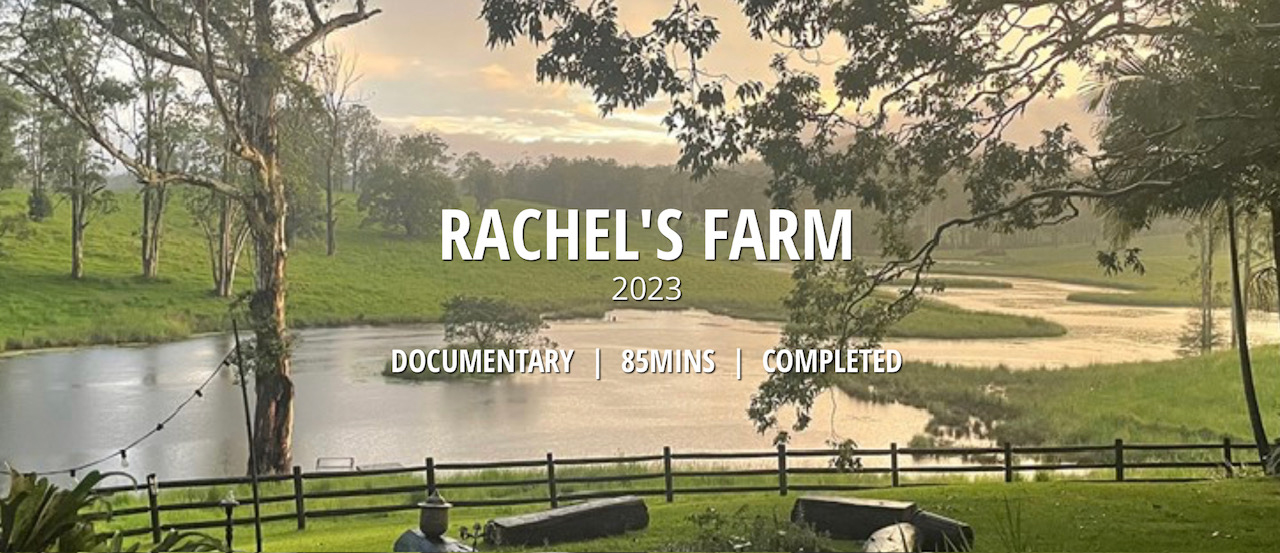RACHEL’S FARM – A BACKGROUND PERSPECTIVE
Rachel’s Farm, a film on regenerative agriculture.
Showing at Randwick Ritz, Mon-Wed August 7 – 9 (daytime).
Special Screening with Q&A on Tue 22 August, 6.30pm.
By Chris Miliotis
The main focus to reach net zero by 2050 is primarily to decarbonise a number of sectors which are currently heavy greenhouse gas emitters, through switching to renewables . While this is very sound , agriculture is not seen as a significant part of the solution, but instead part of the problem. Yet Regenerative Agriculture has the capacity to drawdown CO2 from the atmosphere and store it in the soil with a number of co-benefits like increased water holding capacity, improved nutrient cycling and enhanced food security.
In a climate challenged future with increased droughts, fire and floods, the industrialised chemical farming as the main paradigm for growing our food is ill suited to withstand these future challenges. Currently, it is estimated that conventional agriculture only contributes 14% of greenhouse gas emissions. Yet if all the inputs of fertiliser manufacture at one end and the methane emitted from the dumping of food waste is added at the other end, is this a true picture of what our food system is adding to global warming, only 14%?
Agricultural practices (of which there are many forms e.g.organic, biodynamic, permaculture etc.) that are less reliant on agrochemicals can help regenerate lands that have suffered from industrialised agriculture within only one generation of farming, necessitates a complete 180 degree turn around as we head to 2050.
Regenerative Agriculture, as the name implies, has the potential to not only reduce greenhouse gas emissions, but also store that excess carbon in the soil. This occurs as we know, through photosynthesis, plants utilising CO2 and converting the CO2 to sugars, which can then feed the myriad of microbes in the soil below. These microbes, congregate around the root zone to ‘naturally’ provide nutrients to the plant in a symbiotic relationship. This carbon cycling is complex but allows for increased storage of water in the soil, as well, (for a 1% increase in soil carbon allows the soil to store an additional 144,000 litres per hectare).

When soils reach a critical 3% soil carbon level, they can become self-reliant with fewer and fewer external inputs to maintain productivity and resilience. Currently in Australia the average Soil Carbon levels barely reach 1%, from an estimated 5% pre-settlement level.
Where has all the carbon gone?
Back into the atmosphere as oxidised carbon ( CO2) and into our waterways as silt, with a massive loss of soil fertility and collapse of aquatic ecosystems downstream with extreme examples of mass fish kills, or compromising the delicate balance of the Great Barrier Reef.
The film Rachel’s Farm depicts the challenges that her farm undergoes to transition from chemically based farming to regenerative based farming to meet these future challenges.
Overall it can be said we need to utilise the excess carbon in the atmosphere and store carbon in the soil, to buy critical time leading up to net zero by 2050.
We as consumers can play a critical role in aiding this transition by our conscious buying decisions of eco-friendly grown foods, which can ultimately be part of the solution to climate change mitigation.
In summary ‘we can decarbonise our economy as we carbonise our soils’.
The documentary Rachel’s Farm explores some of these inherent economies of nature, leading us on a journey to explore what is possible heading into the future and can inspire hope .
This story of reclaiming degraded land, using regenerative principles by working with the solar, carbon, water and nutrient cycles, and the human being as a co-creator with the nature, all occurring as an indivisible whole, is awe inspiring and it is told with raw honesty and humour.

